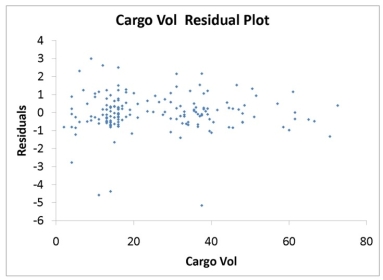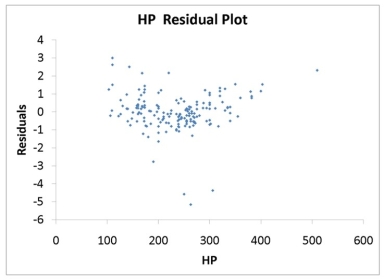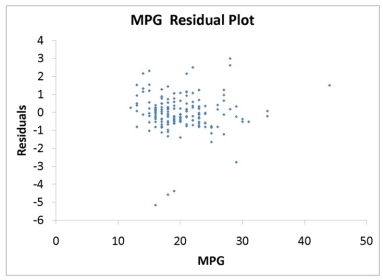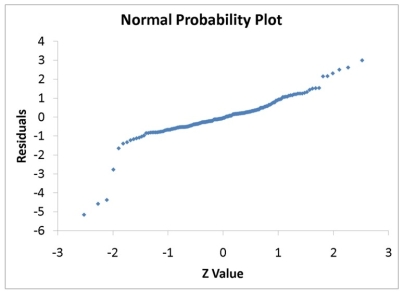TABLE 13-16
What are the factors that determine the acceleration time (in sec.) from 0 to 60 miles per hour of a car? Data on the following variables for 171 different vehicle models were collected:
Accel Time: Acceleration time in sec.
Cargo Vol: Cargo volume in cu. ft.
HP: Horsepower
MPG: Miles per gallon
SUV: 1 if the vehicle model is an SUV with Coupe as the base when SUV and Sedan are both 0
Sedan: 1 if the vehicle model is a sedan with Coupe as the base when SUV and Sedan are both 0
The regression results using acceleration time as the dependent variable and the remaining variables as the independent variables are presented below.

The various residual plots are as shown below.





The coefficient of multiple determination for the regression model using each of the 5 variables Xj as the dependent variable and all other X variables as independent variables (Rj2) are, respectively, 0.7461, 0.5676, 0.6764, 0.8582, 0.6632.
-Referring to Table 13-16, the 0 to 60 miles per hour acceleration time of a coupe is predicted to be 0.7679 seconds higher than that of a sedan.
Definitions:
Psychodynamic Therapy
A therapeutic approach focusing on unconscious processes as they are manifested in a person's present behavior, aiming to uncover unresolved conflicts.
Psychoanalysis
Form of treatment for psychopathology involving alleviating unconscious conflicts driving psychological symptoms by helping people gain insight into their conflicts and finding ways of resolving these conflicts.
Objects
Physical items that can be seen and touched, usually inanimate and distinct from living beings.
Unconscious Internalized Representations
Mental constructs derived from past experiences and deeply held beliefs that influence perceptions and behaviors, often outside conscious awareness.
Q10: In which sector are some unions more
Q18: Which of the following is considered an
Q27: In which important way are relative pay
Q42: Referring to Table 12-13, the regression mean
Q47: Referring to Table 12-13, the decision on
Q60: Referring to Table 12-3, the least squares
Q131: When an additional explanatory variable is introduced
Q141: Which of the following assumptions concerning the
Q145: Referring to Table 12-9, the estimated change
Q200: Referring to Table 13-17 Model 1, which